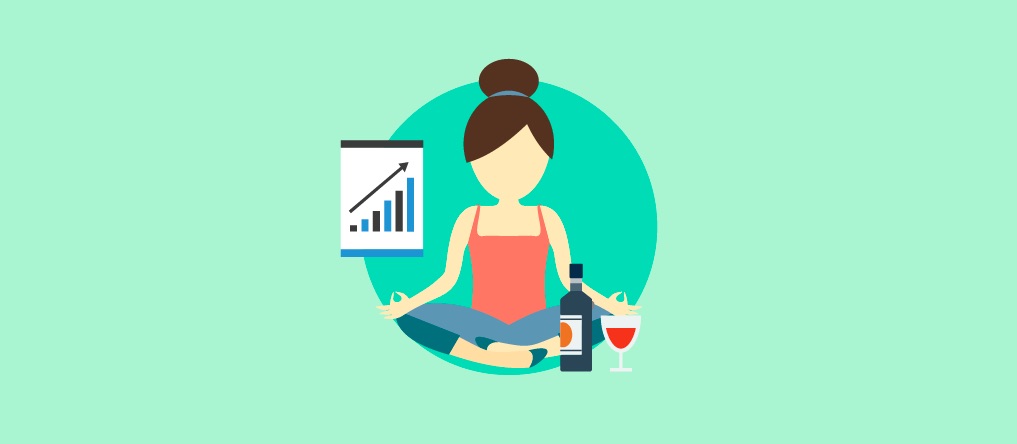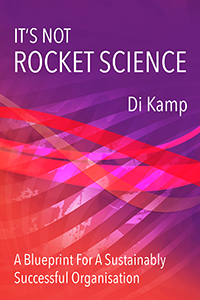In last months’ blog we talked about working from home and how our own empirical evidence collated from those we’ve worked with in the past year, suggests that it’s become something which is less heavenly and more hellish during the last 12 months. Many of us feel that work has now fully invaded our home life and it’s difficult to switch off, we feel we must be permanently switched on. Of course, this isn’t the case for all of us, some of us have done a pretty good job of making the reality of working from home WORK for us, but here at Meta, we felt it would be useful to share what WE have learned over the years about working from home.
Meta has always been a virtual company. 20 years ago, that was VERY unusual but now, especially during Covid, it’s become more normal to be working from home. We’ve essentially been a living experiment in home working since our inception, and so we’ve probably experienced most of the things that you’ve experienced in the last 12 months. However, NOW you have the extra dimension that is the technology which comes into your home too, with the advent of Zoom and Microsoft Teams, and data collection programmes that can measure how often you’re on your screen; now there IS no escape from the office (even though you’re at home!).
Over the years we have not only been virtual workers, that living experiment, but we’ve also spent a lot of our time researching smarter working techniques and have been developing simple but practical tools that enable everyone to work at their best and maximise their personal performance to allow them to get through the increased workloads without extending their working hours. There is SO MUCH research and scientific data now that highlights the effectiveness of smarter working, and so we felt it was time to share what we’ve researched, experimented with, and learnt about creating a working from home routine that works for you.
We did the hard work, we did the research, so you don’t have to. We can promise you, that if you implement even just five or six of these simple and practically applicable tips, you will have a significant improvement in how working from home feels for you.
And of course, the likelihood is that we will be managing a hybrid model of working in the future (probably by the end of this year for most of you), where we work sometime in the office and sometime at home. But if you can implement these smarter working techniques, you will you improve your home working practice and also your office working practice too. It’s a WIN-WIN scenario.
Here are our 15 TOP TIPS for making working from home, work for you:
NUMBER 1: FIND A WORK SPACE THAT WORKS FOR YOU – Ideally you want a separate space just for work. We understand that, for those of you in smaller homes, this may not be possible; however, you can still organise a smaller working space where you are comfortable and which fits our recommendations, even if this is just a temporary set-up at your dining table. You will still be able to ensure that the other tick box list is implemented too. Make sure that the desk (or table), if at all possible, is by a window, lit well, and has a comfy chair (i.e not the kitchen stool – ask your organisation about possibility of buying you a chair). Your computer/laptop should be at head height (my computer has been, for years, on top of four encyclopaedias of art books – thank you Britannica); and do make sure, if possible, you ‘put away’ your laptop/computer/work phone at end of day – this is especially true for those of you working in a shared space. Remember the old axiom “Out of sight, out of mind” – if you can’t see the flashy lights or hear the email notices you don’t tend to go back to your technology.
NUMBER 2: KEEP SET WORKING TIMES – We all feel that work has creeped into our homelife and, according to recent research done in the USA, during the first six months of lockdown the average working day had increased by 48.5minutes (that’s over four extra hours a week!) The best way to peg it back is to create realistic ‘work-day’ times and stick to them. Use your technology to help remind you, until it becomes a habit, by setting an alarm one hour, 30 minutes and 15 minutes before your agreed end time.
NUMBER 3: CHECK YOUR ENERGY LEVELS EACH AND EVERY MORNING – How is your energy fuel tank this morning? Make sure that, if you’re not in the right state, you give yourself either a boost of light (and caffeine!) in your garden or even on your doorstep if you don’t have a garden, or have yourself some treats BEFORE you start work. Also, don’t forget the most important meal of the day is your BREAKFAST, your brain just doesn’t work without it (seriously! see note on EATING and BREAKS).
NUMBER 4: HAVE SET BREAKS DURING THE DAY AND MAKE SURE YOU DIARY THEM IN – So much research says that taking breaks increases productivity – our brain gets saturated very quickly and it struggles to work effectively beyond a two-hour window of constant focus. So, make sure you keep your breaks (use your online diary to make sure they are blocked out), doing so will help you get more done, not less. Remember the saying, “Move your body, move your mind”. Once you’ve gone past your peak working time in your day, you’ll find you can get easily stuck on stuff and this is why taking breaks is important. Even micro-breaks have been proven to work, so get up move around, get a breath of fresh air and a cuppa, as it helps the brain to ‘clear capacity and re-set.’
NUMBER 5: MAKE A CLEAR DISTINCTION BETWEEN ‘WORK YOU’ AND ‘HOME YOU’ – Wear work clothes for work (sounds daft but it WILL help you to distinguish between work you and home you when you’re at home), and have a routine at the end of the day: take a shower, change your clothes, read a paper or listen to a podcast. If you’re working at home the likelihood is you’ve lost your commute home time, so ‘reclaim your commute time’ and go walk the dog or exercise at the end of your working day to re-create your commute.
NUMBER 6: MAKE SURE YOUR’RE GETTING AT LEAST 45 MINUTES OF DAYLIGHT EACH DAY – The more I research I do into daylight, the more importance I have given it in my working day. Daylight helps you stay alert and helps you to get into a natural circadian rhythm essential for good sleep. Just 45minutes of daylight each day will help you sleep that night; morning light, especially, can help you produce melatonin later in the day and this promotes a natural tiredness and better-quality sleep.
NUMBER 7: MAKE SURE YOU ARE EXERCISING EVERY DAY – Our bodies are not designed to be as sedentary as we have become. We’re not meant to spend eight hours in front of a computer screen, we’ve still got the same bodies as when we were hunter gatherers, so we need to make sure that it’s not just our minds which are worn out, but our physical bodies too. You don’t have to be a gym bunny, or a fitness freak, but you can combine your exercise with your 45 minutes of daylight, or re-create your commute, or walk the dog. You don’t have to do a whole one-hour workout but, especially if you are feeling stressed, a good intensive interval training type of workout can be very beneficial, to not only tire you out, but also dissipate your stress hormones in your body and close down your stress factory (which is essential for getting a good night’s sleep). We were much better at this in the first lockdown but we’ve let it slip. Now is the time to get it back INTO your working from home routine, it’s good for you!
NUMBER 8: EAT!! YOUR BRAIN NEEDS FUEL TO PERFORM AT ITS BEST – This might sound basic, but so many people are not fuelling themselves enough in their working day. As we’ve heard previously, it’s important to take your breaks, but taking breaks without re-fuelling is performance suicide. Your brain uses 20% of your calorific intake just to FUNCTION normally – 20% of nothing = frankly, a rather useless brain. Eating the right things helps too – LOW GI food stuffs are better to avoid sugar spikes (as you get sugar dips after which can make us lethargic); nuts, seeds, protein, wholefoods, fruits are good, and avoid high fat or sugar foods.
NUMBER 9: MAKE USE OF YOUR PEAK PERFORMANCE TIMES (AND DEAD TIMES) – We all have peak and dead working times in our average working day. Our peak working time is a consistent three-hour window where our brain is performing at its absolute peak. It’s the same three-hours every day, so if you can identify that peak working time you can maximise your performance. Put the more complex, challenging tasks that require real processing power in that three-hour window. You can get up-to-twice as much done in that three-hour window than you can in the entirety of the rest of the day. Your dead working time is a two-hour window, normally towards the end of your working day, when your brain has an inability to function at a high level. That’s the time for admin and simple tasks that don’t require a lot of brain power. Now we’re working from home this is a great time to experiment and collect your own evidence about your optimum working times, so you can organise your workload accordingly. Block out the diary and assign your work tasks (or types of tasks) to each performance category – this is our most powerful smarter working tool.
NUMBER 10: CLAIM BACK CONTROL OF YOUR ONLINE DIARY – Your online diary IS YOUR ONLINE DIARY, not everyone else’s! You own it, and so it’s really OK to say no sometimes. Online diaries have meant that we can end up, if we’re not careful, being at everyone else’s’ beck and call. Back-to-back meetings just DON’T WORK – especially now we’re doing things over virtual technology. We need time to recover BETWEEN meetings, so make sure you have at least ten-minutes to do a re-set between meetings. And don’t be afraid to say NO – if you don’t think you should be at a meeting, it’s OK to ask why you’ve been invited.
NUMBER 11: RE-SET YOUR HARD (AND SOFT) BOUNDARIES – There is no doubt that the tide of work has now fully invaded our home life too. It’s not our fault, it’s just gradually seeped in over time. So now is as good a time as any to re-set your boundaries. There are two types of boundaries: HARD boundaries (these are your non-negotiables, the boundaries you won’t change unless it’s an emergency), and your SOFT boundaries (these are the boundaries that have a little flexibility or give and take in them). Everyone’s boundaries will be different: for one it might be to not work at all on the weekends, for another to not answer emails in the evenings, for me it’s being able to tuck my daughter into bed at night and read her a story. Whatever they are for you, make sure your team/bosses know. You’ll find that, when you dare to re-claim your boundaries, people will respect you for doing so, not judge you.
NUMBER 12: IN THE LAST HOUR/HALF-HOUR OF YOUR WORKING DAY, START TO WIND DOWN – At the end of our working day, our brain’s performance is at best 50% (and for many people less than 20%) to where it was at its peak earlier in the day. To put that into simple terms, a task that might take 15minutes in the morning might take a whole hour at the end of your day. So, make sure the last 60minutes, or at least the last 30 minutes, of your working day are spent on less meaningful tasks that require less processing power. Or you could celebrate your successes from the day, or prepare your to-do list for the next day. Set an alarm (or multiple alarms if you’re not good at stopping!) to make sure you DO actually stop on time.
NUMBER 13: UNWIND TIME AT THE END OF YOUR DAY – According to research done at the University of Surrey, we have lost a very important time in our day, gradually, over the last ten or so years – it’s called our UNWIND TIME. Work can be stressful and can get us ‘wound up’, so make sure that, at the end of your working day, you take time to unwind and de-stress BEFORE you start on your home chores (see note on ‘creating a restorative space’ below). Our body and mind need time to recover after a busy day; our system needs to shut down the stress factory and get back to its normal biochemistry. It’ll make your evenings much more pleasant and enjoyable, and you will be much more enjoyable and pleasant to be around too – so it’s not just you that will notice the difference from this, but your partner and children too!
NUMBER 14: DO CREATE A RESTORATIVE SPACE – We all need a sanctuary to unwind, a restorative space to recover ourselves. It could be in the garden or a study, your bedroom, or just a comfy chair you love. Spend at least 30 minutes there ‘unwinding’ before you launch into the ‘what next’ – be that looking after the kids, starting cooking, or doing some household chores. It’s a great excuse to get yourself some new comfy cushions or buying some new garden furniture. Creating your restorative space is almost as much fun as being in it! Use the 30minutes or so doing non-work-related things: do a hobby, read a paper, listen to a podcast or your favourite music. In my household I call it my “wine down” time (as I’ll go outside into my garden restorative space, listen to some music and have a glass of wine!).
NUMBER 15: GET A GOOD NIGHT’S SLEEP – The most important thing you can do when it comes to your working routine isn’t actually found in any of the above, it’s something more fundamental than that, it’s getting a good night’s sleep. So, if you’re someone who suffers with your sleep (you’re not alone by the way, there is a real ‘sleeplessness epidemic’ going on right now in this country), it really is something worth focussing on, because put very simply, SLEEP is your greatest resource of all. With a good night’s sleep, you can be your amazing, brilliant best; without a good night’s sleep, everything is just harder work! If you want some tips on getting a good night’s sleep, then just get in touch as we’ve been researching and delivering workshops on #performance sleeping for years!
At Meta, we’re passionate about helping YOU to be the best you can be, and helping organisations to support their staff to be the best they can be. So, we hope these 15 top tips help you to create a working from home regime that works for YOU (and if it works for you, it’ll work for your organisation too!)
Have a wonderful month!
In peace,
Jo xx






Comments are closed.